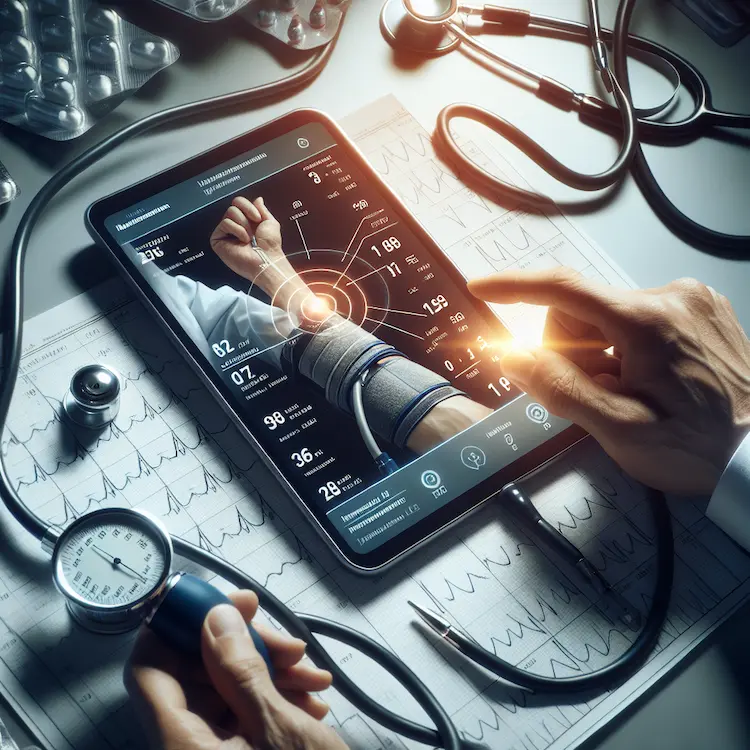Hypertension, or high blood pressure, is a prevalent and potentially dangerous condition affecting millions of people worldwide. Effective management of hypertension is crucial for reducing the risk of cardiovascular diseases, stroke, and other related complications. In recent years, blood pressure monitoring has emerged as a cornerstone in hypertension management, empowering both patients and healthcare providers with valuable data to guide treatment decisions and lifestyle modifications.
The Importance of Blood Pressure Monitoring
Accurate and consistent blood pressure monitoring is essential for several reasons:
- Diagnosis: It helps in the early detection and accurate diagnosis of hypertension.
- Treatment efficacy: Regular monitoring allows healthcare providers to assess the effectiveness of prescribed medications and lifestyle changes.
- Patient engagement: Self-monitoring encourages patients to take an active role in managing their condition.
- Identifying patterns: It helps in recognizing blood pressure fluctuations throughout the day and in response to various factors.

Types of Blood Pressure Monitoring
There are several methods for monitoring blood pressure, each with its own advantages and limitations:
1. Office Blood Pressure Measurement (OBPM)
This traditional method involves measuring blood pressure in a clinical setting using a sphygmomanometer.
Pros:
- Standardized procedure
- Immediate results
- Opportunity for face-to-face consultation
Cons:
- White coat hypertension
- Limited data points
- May not reflect true average blood pressure
2. Home Blood Pressure Monitoring (HBPM)
Patients measure their own blood pressure at home using automated devices.
Pros:
- Convenient and cost-effective
- Multiple readings over time
- Eliminates white coat effect
- Improves patient engagement
Cons:
- Requires patient training
- Device accuracy may vary
- Potential for measurement errors
3. Ambulatory Blood Pressure Monitoring (ABPM)
This method uses a portable device to measure blood pressure at regular intervals over 24-48 hours.
Pros:
- Provides comprehensive data
- Captures blood pressure during daily activities and sleep
- Helps identify masked hypertension
- Considered the gold standard for diagnosis
Cons:
- More expensive
- May cause discomfort
- Requires specialized equipment and interpretation
Comparison of Blood Pressure Monitoring Methods
| Method |
Frequency |
Setting |
Accuracy |
Patient Involvement |
Cost |
| OBPM |
Periodic |
Clinic |
Moderate |
Low |
Low |
| HBPM |
Daily |
Home |
Good |
High |
Moderate |
| ABPM |
Continuous |
Various |
Excellent |
Moderate |
High |
The Role of Technology in Blood Pressure Monitoring
Advancements in technology have revolutionized blood pressure monitoring, making it more accessible and user-friendly:
- Smart blood pressure monitors: These devices can sync with smartphones, allowing for easy data tracking and sharing with healthcare providers.
- Wearable devices: Some smartwatches and fitness trackers now offer blood pressure monitoring capabilities, providing continuous data collection.
- Telemedicine platforms: Remote monitoring solutions enable patients to share their blood pressure data with healthcare providers in real-time, facilitating timely interventions.

Best Practices for Home Blood Pressure Monitoring
To ensure accurate readings when monitoring blood pressure at home:
- Use a validated device and appropriate cuff size.
- Measure at the same time each day, preferably in the morning and evening.
- Avoid caffeine, exercise, and smoking for 30 minutes before measurement.
- Sit quietly for 5 minutes before taking a reading.
- Take multiple readings and record all results.
- Share the data with your healthcare provider regularly.
Impact of Blood Pressure Monitoring on Hypertension Management
Research has shown that incorporating blood pressure monitoring, particularly home monitoring, into hypertension management can lead to significant improvements in blood pressure control. A study conducted by Margolis et al. demonstrated that patients using home blood pressure monitoring with pharmacist management achieved better blood pressure control compared to those receiving usual care.
Key findings include:
- At 6 months: 71.8% of the intervention group had controlled blood pressure vs. 45.2% in the usual care group.
- At 12 months: 71.2% of the intervention group maintained control vs. 52.8% in the usual care group.
- At 18 months: 71.8% of the intervention group still had controlled blood pressure vs. 57.1% in the usual care group.
These results highlight the long-term benefits of incorporating home blood pressure monitoring into hypertension management strategies.
The Future of Blood Pressure Monitoring
As technology continues to advance, we can expect to see further innovations in blood pressure monitoring:
- Cuffless blood pressure measurement: Non-invasive techniques using optical sensors or other technologies may become more prevalent.
- Artificial Intelligence (AI) integration: AI algorithms could help predict blood pressure trends and provide personalized recommendations.
- Internet of Things (IoT) devices: Smart home devices may incorporate blood pressure monitoring capabilities, making it even more seamless for patients.
Conclusion
Effective blood pressure monitoring is crucial for successful hypertension management. By incorporating regular monitoring, particularly through home blood pressure measurements, patients and healthcare providers can work together to achieve better blood pressure control and reduce the risk of cardiovascular complications. As technology continues to evolve, blood pressure monitoring will likely become even more integrated into our daily lives, further empowering individuals to take control of their hypertension and overall health.

